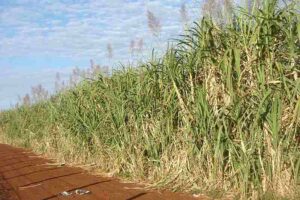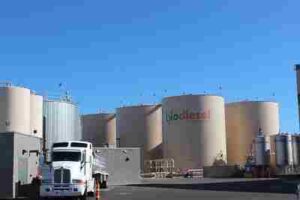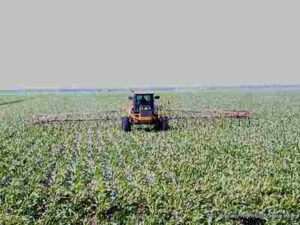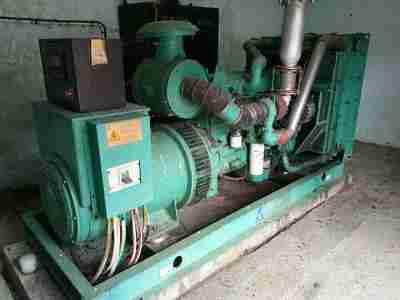21+ Advantages and Disadvantages of Biodiesel Discussed
Advantages and disadvantages of biodiesel are; renewable availability, improved air quality, relatively safe combustion, reduced greenhouse emissions, high flashpoint, relatively low toxicity, contribution to energy security, overall sustainability, lower human health risk, significant fuel efficiency, relative ease of storage and transport (Advantages); high corrosivity, risk of explosion, long-term corrosive damage to engines, low adoption rates. poor suitability for many combustion engines, high variability of quality, high extraction cost, relatively low cost effectiveness, water and fertilizer use during production, contribution to deforestation, and food security challenge (Disadvantages).
This article discusses the advantages and disadvantages of biodiesel, as outlined below;
-Advantages of Biodiesel
Advantages of biodiesel are; renewable availability, improved air quality, relatively safe combustion, reduced greenhouse emissions, high flashpoint, relatively low toxicity, contribution to energy security, overall sustainability, lower human health risk, significant fuel efficiency, relative ease of storage and transport.
1). Renewable Availability: One of the Advantages of Biodiesel
Renewable availability is a key advantage of biodiesel, as well as a factor that distinguishes it from finite fossil fuels like coal.
Concepts that can be discussed with regards to the renewable availability of biodiesel include; its biological source(s), cyclical production, reduced risk of resource depletion, carbon neutrality potential, diverse feedstock options, and localized production.
Biodiesel is derived from renewable biological sources, primarily plant-based oils such as soybean, canola, or waste cooking oil. This contrasts with fossil fuels that are finite and non-renewable.
The raw materials for biodiesel, such as crops or organic waste, can be grown and regenerated within relatively short time frames. This cyclical production enables a continuous and sustainable source of biodiesel feedstocks.

As biodiesel relies on crops or waste, it mitigates the dependency on depleting fossil fuel reserves. This contributes to long-term energy security and reduces the environmental impact associated with fossil fuel extraction.
Biodiesel has the potential to be carbon-neutral or even carbon-negative when considering the carbon dioxide absorbed during the growth of the feedstock plants. This contrasts with fossil fuels that release carbon stored over millions of years.
The versatility of biodiesel production allows for the utilization of a wide range of feedstocks, including non-food crops and waste materials. This diversity enhances resilience in the face of changing agricultural conditions.
Biodiesel can often be produced on a smaller scale and in a decentralized manner, allowing for local production and utilization of renewable resources. This decentralization, combined with renewable energy production, can enhance energy security and support local economies.
2). Improved Air Quality
Improved air quality is a notable advantage of biodiesel.
It can be discussed within contexts such as emissions of harmful pollutants, greenhouse gases, biodegradability, improved respiratory health, and compatibility with existing infrastructure. These are all discussed below;
Biodiesel combustion produces fewer harmful pollutants, such as sulfur oxides, particulate matter, and aromatic hydrocarbons, compared to traditional diesel. This leads to reduced air pollution and a healthier atmospheric environment.
Typically, the use of biodiesel results in lower net carbon dioxide emissions compared to fossil diesel, particularly when derived from feedstocks that absorb CO2 during their growth. This helps mitigate the impact of transportation on climate change.
Biodiesel is more biodegradable than conventional diesel fuel. In the event of spills or leaks, biodiesel poses less risk to ecosystems, minimizing potential long-term environmental degradation.
The reduction in particulate matter and other air pollutants from biodiesel combustion contributes to improved air quality. This, in turn, can have positive effects on respiratory health, especially in urban areas where vehicular emissions are a significant concern.
Biodiesel can be used in existing diesel engines and infrastructure without requiring significant modifications. This facilitates a smooth transition to a cleaner fuel source, minimizing the environmental impact of transportation.
3). Relatively Safe Combustion: One of the Advantages of Biodiesel
Relatively safe combustion is an advantage of biodiesel, and can be viewed as an attribute that distinguishes it from traditional diesel.
In discussing the relative safety of biodiesel as a fuel, some factors that should be highlighted include; flash point, reduced emission of hazardous compounds, biodegradability and lower toxicity, compatibility, and lower risk of engine knocking.
Biodiesel has a higher flash point compared to conventional diesel fuel. This means that biodiesel is less prone to ignition, enhancing overall safety in handling, storage, and transportation.
Biodiesel combustion produces fewer toxic emissions, including sulfur compounds and aromatic hydrocarbons, contributing to a safer working environment for those involved in the production, storage, and utilization of biodiesel.
In the event of spills or accidents, biodiesel is more biodegradable and exhibits lower toxicity compared to conventional diesel. This reduces the impact and potential harm to the environment.
Biodiesel can be used in existing diesel engines and infrastructure without significant modifications. This ensures that the safety standards established for diesel fuel can be maintained when transitioning to biodiesel.
Biodiesel's combustion characteristics, including its higher cetane number, often lead to a lower risk of engine knocking. This contributes to smoother and safer engine operation.
4). Reduced Greenhouse Emissions
Reduced greenhouse gas emissions are a benefit of using biodiesel in place of conventional fuels.
This benefit can be discussed with respect to carbon content, neutrality potential, decreased greenhouse emission, offsetting of fossil fuel use, and lifecycle emission reduction.
Biodiesel typically has a lower carbon content than conventional diesel, leading to reduced carbon dioxide emissions per unit of energy produced during combustion.
Biodiesel can be produced from feedstocks that act as carbon sinks, and absorb carbon dioxide during their growth, such as certain plant oils. This potential for carbon neutrality contributes to mitigating the overall greenhouse gas impact of biodiesel.
Biodiesel combustion produces fewer greenhouse gases, including carbon monoxide, sulfur oxides, and nitrogen oxides, compared to traditional diesel. This contributes to lower overall emissions that drive climate change.
As a renewable energy source, biodiesel reduces dependence on finite fossil fuels. Using biodiesel in place of conventional diesel helps offset the carbon emissions associated with fossil fuel extraction, refining, and combustion.
The entire lifecycle of biodiesel, from production to combustion, often results in lower greenhouse gas emissions compared to traditional diesel. This encompasses factors such as feedstock cultivation, processing, transportation, and end-use combustion.
5). High Flashpoint: One of the Advantages of Biodiesel
The high flashpoint of biodiesel is a notable advantage, which can be attributed to its chemical properties.
This advantage is linked to increased safety in handling, reduced fire hazard, as well as infrastructural compatibility.
Biodiesel has a higher flashpoint compared to traditional diesel, making it less prone to combustion during storage, transportation, and handling. This characteristic enhances overall safety in the biodiesel supply chain.
The higher flashpoint reduces the risk of biodiesel ignition, minimizing the potential for fires or explosions in case of accidental spills or leaks. This contributes to a safer working environment in biodiesel production and utilization.
Biodiesel's high flashpoint allows it to be used in existing diesel engines and infrastructure without significant modifications. This ensures that safety standards established for diesel fuel can be maintained when transitioning to biodiesel.
6). Relatively Low Toxicity
Relatively low toxicity is a notable advantage of biodiesel, attributed to its chemical composition, and analyzed in terms of its environmental impact.
This advantage can be discussed with references to biodegradability, reduced harmful emissions, lower health risks, and environmental sustainability.
Biodiesel is more biodegradable than traditional diesel, minimizing its environmental persistence and reducing potential harm to ecosystems in case of spills or leaks.
Biodiesel combustion produces fewer toxic emissions, such as sulfur compounds and aromatic hydrocarbons, contributing to a safer working environment for those involved in production, storage, and utilization.

Biodiesel's lower toxicity reduces health risks for workers and end-users. This is especially relevant in scenarios where exposure to fuel or exhaust emissions occurs, promoting a safer overall environment.
Biodiesel's low toxicity aligns with environmental preservation efforts, minimizing the impact on soil, water, and air quality, and supporting sustainable practices in the fuel industry.
7). Contribution to Energy Security: One of the Advantages of Biodiesel
Contribution to energy security is a key advantage of biodiesel, and can be analyzed with the inclusion of factors like diverse feedstock sources, renewable nature, local production opportunities, and reduced dependency on imported oil.
Biodiesel can be produced from a variety of feedstocks, including plant oils and waste materials. This diversification reduces reliance on a single resource, enhancing energy security by mitigating the impact of fluctuations in supply or geopolitical events.
Because biodiesel is derived from renewable biological sources, it can be made available in continuous and sustainable supply. This contrasts with fossil fuels, contributing to long-term energy security by reducing dependence on finite resources.
Biodiesel can often be produced on a smaller scale and in decentralized settings. This localization of production enhances energy security by reducing vulnerability to disruptions in centralized energy infrastructure.
Regions that produce biodiesel locally can decrease their dependency on imported oil, providing a more secure and self-sufficient energy source. This helps insulate against geopolitical uncertainties in oil-producing regions.
8). Overall Sustainability
Overall sustainability of biodiesel is significant, and can serve as a benefit of this alternative energy source.
The sustainability of biodiesel is highlighted by its renewable feedstocks, reduced greenhouse gas emissions, biodegradability, potential for local production, energy security, and reduced toxicity.
Biodiesel is derived from renewable feedstocks, such as plant oils and waste materials, reducing dependence on finite fossil fuels and promoting long-term resource sustainability.
Also, biodiesel typically emits fewer greenhouse gases during combustion compared to traditional diesel, contributing to climate change mitigation and environmental sustainability.
Biodiesel is more biodegradable than conventional diesel, minimizing environmental impact in case of spills and aligning with sustainable practices for ecosystem preservation.
Biodiesel production can often be decentralized, allowing for local manufacturing and reducing transportation-related energy consumption. This decentralization supports community sustainability.
Biodiesel's diverse feedstock options and renewable nature contribute to energy security by reducing reliance on imported oil and promoting self-sufficiency in energy production.
Lastly, biodiesel's lower toxicity compared to traditional diesel enhances safety for workers and reduces harm to ecosystems, aligning with sustainability principles.
9). Lower Human Health Risk: One of the Advantages of Biodiesel
Lower human health risk is associated with the use of biodiesel, in comparison to some alternatives.
It can be analyzed from various standpoints including; reduced toxic emissions, biodegradability and lower persistence, lower volatility, and infrastructural compatibility.
Biodiesel combustion produces fewer toxic emissions compared to traditional diesel, contributing to improved air quality and minimizing respiratory health risks for workers and communities.
Biodiesel's higher biodegradability reduces the environmental persistence of spills, lowering the risk of long-term exposure and potential harm to human health.
Also, biodiesel's lower volatility and higher flashpoint reduce the risk of accidental ignition, enhancing safety during production, transportation, and handling, thereby decreasing the risk of injuries.
Biodiesel can be used in existing diesel engines and infrastructure without major modifications, maintaining established safety standards and minimizing potential health hazards associated with fuel use.
10). Significant Fuel Efficiency
Significant fuel efficiency can also be attributed to biodiesel, for some applications and on the basis of certain comparisons.
This advantage is a function of variables like cetane number, lubricity properties, combustion characteristics, and engine compatibility.
Biodiesel often has a higher cetane number than traditional diesel, promoting better ignition quality and combustion efficiency, which can enhance overall fuel efficiency.
Biodiesel exhibits good lubricity, reducing friction and wear in engine components. This can contribute to improved engine performance and fuel efficiency over the long term.
The combustion characteristics of biodiesel, including its oxygen content, can lead to more complete combustion. This efficiency results in better fuel utilization and potentially increased mileage per gallon.
Biodiesel can be used in existing diesel engines without significant modifications. Its compatibility ensures that engines maintain optimal efficiency when transitioning from conventional diesel to biodiesel.
11). Relative Ease of Storage and Transport: One of the Advantages of Biodiesel
Relative ease of storage and transport is an advantage of biodiesel. It is related to factors like flashpoint, biodegradability, infrastructural compatibility, and level of volatility.
Biodiesel generally has a higher flashpoint compared to traditional diesel, reducing the risk of ignition during storage and transportation. This enhances safety and simplifies handling procedures.
The biodegradability of biodiesel makes it less harmful in the event of oil spills. This characteristic simplifies cleanup/remediation procedures and reduces the environmental impact associated with storage or transportation accidents.
Biodiesel can be stored and transported using existing diesel infrastructure, minimizing the need for significant modifications. This eases the integration of biodiesel into existing fuel supply chains.
Biodiesel's lower volatility contributes to a more stable storage environment, reducing the risk of vaporization and simplifying storage requirements compared to more volatile fuels.
-Disadvantages of Biodiesel
Disadvantages of biodiesel are; high corrosivity, risk of explosion, long-term corrosive damage to engines, low adoption rates. poor suitability for many combustion engines, high variability of quality, high extraction cost, relatively low cost effectiveness, water and fertilizer use during production, contribution to deforestation, and food security challenge.
1). High Corrosivity: One of the Disadvantages of Biodiesel
High corrosivity is a notable disadvantage associated with biodiesel, and it can impact various components within fuel engines and systems.
The corrosive nature of biodiesel has diverse implications including increased acidity, hygroscopic effects, compatibility issues with certain materials, microbial growth influence, and storage challenges. Some of these implications obviously almost contradict the advantages of biodiesel earlier discussed in this article. Below is a rundown;
Biodiesel often has higher acidity compared to traditional diesel. This elevated acidity can accelerate the corrosion of metal components in fuel systems, storage tanks, and engine parts, leading to increased maintenance requirements and potential equipment damage.

Also, biodiesel has a hygroscopic nature, meaning it tends to absorb water from the surrounding environment. Water in the fuel system can accelerate corrosion, particularly in the presence of dissolved oxygen, further exacerbating the corrosive effects on metal surfaces.
Biodiesel may not be compatible with some materials commonly used in existing fuel infrastructure. Incompatibility can result in the degradation of seals, hoses, and gaskets, leading to leaks and corrosion.
In fuel systems, biodiesel can support microbial growth. Microbial activity can produce corrosive byproducts and accelerate the degradation of metal surfaces, contributing to corrosion-related issues.
Lastly, biodiesel has different storage requirements compared to traditional diesel, and improper storage conditions, such as exposure to air and moisture, can increase the likelihood of corrosion in storage tanks.
2). Risk of Explosion for Some Types
The risk of explosion, albeit relatively low, is a disadvantage associated with biodiesel, and it is influenced by specific factors inherent to biodiesel and its production process.
This drawback is linked to factors like high flashpoint variability, hydrogen gas formation, storage challenges, material compatibility, biodegradability and water absorption.
While biodiesel generally has a higher flashpoint than traditional diesel, there can be variability in the flashpoint of biodiesel derived from different feedstocks or produced through varying processes. In cases where biodiesel has a lower flashpoint, the risk of ignition and potential explosion may increase, especially in the presence of flammable vapors.
During the production of biodiesel, hydrogen gas can be generated as a byproduct. If not properly managed, the accumulation of hydrogen gas in confined spaces poses an explosion risk. Adequate ventilation and safety measures are essential to mitigate this risk.
Biodiesel's susceptibility to microbial contamination can result in the production of flammable gases, creating an additional risk of explosion, particularly in poorly maintained or contaminated storage tanks.
Also, biodiesel may have different effects on certain materials used in fuel storage and transportation infrastructure. Incompatibility can lead to leaks and the potential for explosive atmospheres, especially if the leaked fuel comes into contact with an ignition source.
Biodiesel's biodegradable nature and tendency to absorb water can impact fuel stability. Water in the fuel system can create conditions conducive to microbial growth and potentially generate explosive gases, increasing the risk of explosion.
It is important to reiterate that the risk of explosion associated with biodiesel is generally low, and adherence to safety guidelines, proper storage, and maintenance practices can effectively mitigate these risks. However, awareness of these factors underscores the importance of responsible handling and storage procedures in the biodiesel production and utilization chain.
3). Long-term Corrosive Damage to Engines: One of the Disadvantages of Biodiesel
Long-term corrosive damage to engines is a recognized disadvantage associated with biodiesel use, as implied already in earlier sections.
It is related to acidity, hygroscopic tendencies, effects on materials, injector deposits and filter plugging, as well as microbial growth.
Biodiesel often exhibits higher acidity compared to traditional diesel. Over the long term, this elevated acidity can contribute to corrosive damage to engine parts, including fuel injectors, fuel pumps, and other metal components. Corrosion can lead to reduced engine efficiency and increased maintenance costs.
Biodiesel has an affinity for water absorption, owing to its hygroscopic characteristics. The presence of water in the fuel system, exacerbated by biodiesel's hygroscopic properties, accelerates corrosion within the engine. This is particularly problematic for internal engine components that may be sensitive to moisture-induced corrosion.
Due to its acidity, biodiesel may not be fully compatible with certain elastomers, gaskets, and seals commonly used in traditional diesel engines. Over time, exposure to biodiesel can lead to the degradation of these materials, causing leaks and facilitating corrosive damage to engine parts.
Biodiesel can lead to the formation of injector deposits and filter plugging over extended use. These issues can impede fuel flow and contribute to corrosive damage within the fuel injection system, affecting engine performance.
The microbial affinity and contamination risk of biodiesel can result in the growth of microorganisms within the fuel system. Microbial activity can produce corrosive byproducts that contribute to long-term damage to engine components.
4). Low Adoption Rates
Low rate of adoption is a drawback for biodiesel, and various factors contribute to the slower integration of biodiesel into mainstream energy markets.
This section analyzes the issue in terms of infrastructure challenges, limited engine compatibility, price competitiveness, consumer awareness and perception, policy and regulatory uncertainty, feedstock availability and cost, as well as market composition.
The existing infrastructure for traditional diesel fuels is not always compatible with biodiesel. The lack of widespread availability of biodiesel refueling stations and storage facilities hampers consumer access and contributes to lower adoption rates.
While biodiesel can be used in many diesel engines, some older models or engines designed exclusively for petroleum-based diesel may not be compatible. This limits the range of vehicles that can readily adopt biodiesel, hindering its broader acceptance.
Biodiesel production costs can sometimes be higher than those of traditional diesel. As a result, biodiesel may not always be economically competitive, making it less attractive to consumers and businesses, especially in regions where economic factors heavily influence fuel choices.
Limited awareness and misconceptions about biodiesel can contribute to hesitancy among consumers. Concerns about performance, availability, and engine compatibility may deter individuals and businesses from adopting biodiesel as a viable alternative.
Inconsistent or unclear government policies and regulations regarding biodiesel can create uncertainty in the market. Lack of stable and supportive policies, including tax incentives and renewable fuel standards, may discourage investment and hinder widespread adoption.
Biodiesel production relies on specific feedstocks, and fluctuations in the availability and cost of these feedstocks can impact the overall cost-effectiveness of biodiesel. Dependence on certain crops for feedstock may also raise concerns about food vs. fuel competition.
Traditional fossil fuels, including diesel, continue to dominate the market. The established infrastructure, distribution networks, and market share of conventional fuels make it challenging for biodiesel to compete effectively.
5). Poor Suitability for Many Combustion Systems: One of the Disadvantages of Biodiesel
Although compatibility is mentioned among the advantages of biodiesel, this attribute is narrow in range compared to the compatibility of fossil fuels. Poor suitability of biodiesel for many combustion systems is a notable disadvantage, influenced by specific characteristics that can pose challenges in various applications.
It can be discussed with reference to factors like; compatibility with existing engines, cold weather performance, material effects, fuel stability and oxidation, fuel injection system challenges, performance variation with feedstock, limited high-bend ratios, and emission challenges.
Biodiesel's chemical composition can differ significantly from traditional diesel, impacting combustion efficiency. In some cases, modifications or adaptations to existing combustion systems may be necessary to ensure optimal performance with biodiesel. This can be a barrier to widespread adoption, particularly in older engine models.
Biodiesel has a higher cloud point and gel point than conventional diesel, making it more prone to cold weather-related issues. In colder climates, biodiesel may solidify, leading to fuel flow problems, filter plugging, and reduced engine performance, rendering it less suitable for certain applications.
The corrosive nature and potential incompatibility of biodiesel with certain materials commonly used in combustion systems, can lead to increased wear and corrosion of engine components. This can result in higher maintenance costs and reduced overall system reliability.
Biodiesel is more prone to oxidation and degradation over time compared to traditional diesel. This can result in poor fuel stability, leading to the formation of deposits, reduced combustion efficiency, and increased engine emissions.
Biodiesel's different combustion characteristics can impact fuel injection systems. Issues such as injector coking and deposits may arise, affecting the precision and efficiency of fuel delivery in combustion systems.
Properties of biodiesel can vary based on the feedstock used for its production. Different feedstocks may lead to variations in viscosity, cetane number, and other key parameters, influencing combustion characteristics and engine performance.
Using biodiesel in high blend ratios (B20 and above) can be challenging due to issues such as increased viscosity and decreased energy content. This limits the feasibility of utilizing biodiesel as a primary fuel source in certain combustion systems.
While biodiesel generally produces lower emissions than traditional diesel, the combustion characteristics may lead to increased nitrogen oxide (NOx) emissions under certain conditions. This can pose challenges for compliance with emission regulations in some regions.
6). High Variability of Quality
The high variability of quality, of biodiesel, can be a significant disadvantage. It arises from diverse feedstocks, production methods, and regional standards.
Several factors contribute to this variability, including feedstock influence, production processes, blending practices, storage conditions, regional specifications, cold flow properties, and lack of standardization.
Biodiesel can be produced from various feedstocks, including different plant oils and animal fats. The composition of these feedstocks varies, impacting key biodiesel properties such as viscosity, cetane number, and oxidative stability. This diversity can lead to inconsistent quality among biodiesel sources.
The methods used to produce biodiesel, including transesterification and esterification, can vary. Differences in production techniques and equipment can result in variations in the final product's quality, affecting combustion characteristics and engine performance.
Biodiesel is often blended with conventional diesel in different ratios. Inconsistencies in blending practices and inadequate quality control measures can lead to variations in the biodiesel blend's properties, impacting its stability, ignition characteristics, and emissions.
Biodiesel is sensitive to storage conditions, particularly exposure to air, light, and moisture. Poor storage practices can result in oxidation, microbial contamination, and changes in fuel properties over time, contributing to the variability of biodiesel quality.

The quality standards and specifications of biodiesel can vary regionally. Differences in regulatory requirements and testing protocols can lead to variations in the quality of biodiesel produced in different geographic areas, affecting its compatibility with combustion systems and overall performance.
Cold flow properties of biodiesel, including its cloud point and gel point, are influenced by feedstock composition and production methods. Variability in these properties can impact the fuel's suitability for use in colder climates, leading to operational challenges.
Unlike traditional diesel, which adheres to consistent international standards, biodiesel lacks global standardization. The absence of uniform specifications can result in a lack of interoperability, making it challenging for consumers and industries to confidently use biodiesel from various sources.
7). High Extraction Cost: One of the Disadvantages of Biodiesel
High extraction costs constitute an undeniable bottleneck associated with biodiesel production, and several factors contribute to the economic challenges in obtaining and processing biodiesel feedstocks.
Here, some aspects addressed include; feedstock availability and competition, land use and agricultural practices, energy intensive extraction methods, processing complexity and technology, feedstock price volatility, scale of production, research and development costs, as well as regulatory compliance costs.
The cost of biodiesel production is significantly influenced by the availability and cost of feedstocks, such as plant oils or animal fats. Limited availability or competition with other industries, such as the food industry for certain edible oils, can lead to higher prices and increased extraction costs.
Biodiesel feedstocks often require agricultural land, and the choice of feedstock may compete with food crops. The need for sustainable and responsible land use practices, as well as adherence to environmental regulations, can increase extraction costs.
Some biodiesel feedstocks, especially certain oilseeds, require energy-intensive extraction methods, such as mechanical pressing or solvent extraction. The energy inputs involved in these processes contribute to higher production costs.
The extraction and conversion of biodiesel feedstocks into usable fuel involve complex processes. The need for advanced technologies, specialized equipment, and skilled labor adds to the overall production costs, making biodiesel less economically competitive compared to conventional diesel.
Prices of biodiesel feedstocks can be subject to volatility due to factors such as weather conditions, geopolitical events, and market demand. This uncertainty can result in fluctuating extraction costs, affecting the economic feasibility of biodiesel production.
The scale of biodiesel production facilities can influence extraction costs. Small-scale or decentralized production facilities may face higher per-unit extraction costs compared to larger, more efficient operations, impacting the overall competitiveness of biodiesel in the market.
Ongoing research and development efforts to improve feedstock yields, extraction methods, and overall biodiesel production efficiency contribute to additional costs. While these investments aim to enhance sustainability and reduce costs over time, they can initially be a financial burden.
Adherence to environmental and safety regulations can add to the overall extraction costs. Compliance with standards related to land use, waste disposal, and worker safety increases operational expenses for biodiesel producers.
8). Relatively-low Cost-Effectiveness
The relatively low cost-effectiveness of biodiesel is another disadvantage, which is related to its overall cost of adoption. This drawback influenced by various factors that impact its economic competitiveness in comparison to traditional diesel; including feedstock, processing, land use, food production, infrastructure, production scale, price volatility, policy and regulatory issues.
The cost-effectiveness of biodiesel is highly sensitive to the prices and availability of feedstocks, such as vegetable oils and animal fats. Fluctuations in the agricultural market, competition with food industries, and limited availability can contribute to higher feedstock costs.
Biodiesel production often involves energy-intensive processes, such as extraction, transesterification, and purification. The energy inputs required for these processes can significantly contribute to the overall production costs, affecting the cost-effectiveness of biodiesel.
The use of arable land for biodiesel feedstock cultivation can lead to competition with food crops, impacting both land availability and contributing to potential increases in feedstock prices. This competition affects the overall cost-effectiveness of biodiesel production.
Need for specialized infrastructure and technologies in biodiesel production, including extraction and refining equipment, adds to the upfront capital costs. These initial investments can impact the overall cost-effectiveness, particularly for smaller-scale biodiesel production facilities.
Biodiesel production facilities may face economies of scale challenges. Smaller-scale operations might experience higher per-unit production costs compared to larger facilities, impacting the overall cost-effectiveness and competitiveness of biodiesel in the market.
The prices of biodiesel feedstocks can be volatile due to factors such as weather conditions, geopolitical events, and market demand. This uncertainty in feedstock prices can lead to unpredictable fluctuations in production costs, affecting the cost-effectiveness of biodiesel.
The regulatory environment, including subsidies, tax incentives, and regulations related to renewable fuels, significantly influences the cost-effectiveness of biodiesel. Changes in policies can impact the economic viability of biodiesel production.
Retrofitting existing infrastructure for biodiesel storage and distribution, or establishing new infrastructure, can entail additional costs. The need for dedicated storage tanks, transportation systems, and blending facilities can affect the overall cost-effectiveness of integrating biodiesel into existing fuel supply chains.
Ongoing investments in research and development to improve biodiesel production processes, feedstock characteristics, and overall efficiency contribute to costs. While these investments aim to enhance cost-effectiveness in the long run, they can initially affect the economic competitiveness of biodiesel.
9). Water and Fertilizer Use During Production: One of the Disadvantages of Biodiesel
Water and fertilizer use during biodiesel production can pose environmental and economic challenges, presenting a notable disadvantage for this renewable fuel.
Multiple factors contribute to this concern, and some examples of them (which are also discussed in this section) are; irrigation for feedstock cultivation, impact on water quality, fertilizer use and environmental impact, competition with food crops, land use change, energy intensity of fertilizer production, sustainable practices and certification.
Many biodiesel feedstocks, such as soybeans, palm oil, and canola, require irrigation for optimal growth. This reliance on water-intensive crops contributes to increased pressure on water resources, particularly in regions facing water scarcity or where unsustainable irrigation practices are employed.
Runoff from fields where fertilizers are used for biodiesel feedstock cultivation can result in the leaching of nutrients, such as nitrogen and phosphorus, into water bodies. This nutrient runoff can lead to water pollution, causing issues like algal blooms and negatively impacting aquatic ecosystems.
The application of fertilizers in biodiesel feedstock cultivation contributes to nutrient loading in the soil. Excessive use of fertilizers can lead to soil degradation, affecting soil quality and biodiversity. Nitrogen-based fertilizers, in particular, can facilitate greenhouse gas emissions, further contributing to environmental concerns.

Some biodiesel feedstocks, such as soybeans and corn, are also important food crops. The use of water and fertilizers for biodiesel production may intensify the competition between food and fuel crops, raising ethical concerns about resource allocation in the context of global food security.
Expansion of biodiesel feedstock cultivation, often involving changes in land use, can contribute to deforestation and habitat destruction. This can result in loss of biodiversity, disruption of ecosystems, and increased greenhouse gas emissions, offsetting the environmental benefits of biodiesel.
The production of fertilizers is energy-intensive, and the reliance on fertilizers for biodiesel feedstock cultivation contributes to the overall energy/carbon footprint of biodiesel. This raises concerns about the net energy balance and the environmental impact of biodiesel production.
While efforts are underway to promote sustainable biodiesel production through certification programs, ensuring widespread adoption of environmentally friendly practices remains a challenge. Striking a balance between biodiesel production and sustainable agricultural practices is essential to minimize the environmental impact.
10). Contribution to Deforestation
Deforestation is an environmental issue associated with biodiesel production.
It can be assessed in terms of expansion of agricultural land, loss of biodiversity, impact on ecosystem services, indirect land use change (ILUC), palm oil plantations, socioeconomic impacts, carbon emissions, climatic effects, and global supply chains.
Biodiesel feedstock cultivation, particularly for crops like palm oil and soybeans, often involves the expansion of agricultural land. In regions with high demand for biodiesel, this expansion frequently leads to deforestation, resulting in the clearing of forests and natural habitats.
The conversion of forest ecosystems into biodiesel crop plantations results in the loss of biodiversity. Forests harbor diverse habitats and support numerous species, and their destruction for biodiesel production can lead to the displacement and endangerment of plant and animal species.
Forests provide essential ecosystem services, including carbon sequestration, water regulation, and soil conservation. Deforestation disrupts these services, contributing to increased greenhouse gas emissions, altered water cycles, and heightened vulnerability to soil erosion.
The indirect impact of biodiesel production on land use, known as ILUC, is a critical factor. As agricultural land is redirected towards biodiesel feedstock cultivation, it may induce the displacement of existing agricultural activities to other areas, potentially causing additional deforestation.
The production of biodiesel from palm oil is particularly associated with deforestation, especially in regions like Southeast Asia. Large-scale palm oil plantations have been linked to extensive forest clearance, impacting vital ecosystems and contributing to habitat loss for species like orangutans and tigers.
Deforestation associated with biodiesel production can have adverse socioeconomic effects on local communities. Displacement of indigenous populations, loss of traditional livelihoods, and social conflicts may arise as a consequence of land-use changes driven by biodiesel expansion.
The clearing of forests releases stored carbon into the atmosphere, contributing to greenhouse gas emissions. This carbon emission, coupled with the loss of the forest's carbon sink functionality, undermines the potential climate benefits associated with biodiesel as a renewable fuel.
The globalization of biodiesel supply chains can amplify deforestation concerns. Biodiesel production in one region may contribute to deforestation indirectly through the displacement of agricultural activities in other parts of the world, creating a complex and interconnected issue.
11). Food Security Challenge: One of the Disadvantages of Biodiesel
Challenges to food security can arise from biodiesel production, and various factors contribute to this concern.
Some of such factors highlighted in this section include; competition for land, price volatility for food crops, shifts in agricultural practices, impact on smallholder farmers, socioeconomic disparities, global supply and demand dynamics, impact on staple crops, and land use efficiency.
Biodiesel feedstocks, such as soybeans, corn, and palm oil, often compete for arable land with food crops. The expansion of biodiesel production can lead to the conversion of agricultural land traditionally used for food production, thereby reducing the overall availability of land for growing food crops.
Increased demand for certain crops as biodiesel feedstocks can contribute to price volatility in food markets. This volatility affects the cost of food staples, potentially impacting the affordability and accessibility of food for vulnerable populations.
The prioritization of biodiesel feedstock cultivation may lead to shifts in agricultural practices. Farmers may choose to grow crops that are economically advantageous for biodiesel production rather than those that address local or regional food needs, exacerbating challenges to food security.
Large-scale cultivation of biodiesel feedstocks may marginalize smallholder farmers who traditionally rely on the cultivation of food crops. These farmers may face increased competition for land and resources, limiting their ability to grow crops for local consumption.
The expansion of biodiesel production, particularly in regions with high food insecurity, can exacerbate socioeconomic disparities. Affluent nations or industries may prioritize biodiesel production at the expense of local food production, intensifying food insecurity in vulnerable populations.
Also, the interconnectedness of global food and biodiesel markets can create complex dynamics. Changes in biodiesel demand or policies affecting feedstock production can have ripple effects on food prices and availability, influencing food security on a global scale.
Some biodiesel feedstocks, such as soybeans, are also key sources of protein in human diets. The diversion of these crops for biodiesel production can affect the availability and affordability of essential food items, particularly for populations that rely on them as dietary staples.
Biodiesel feedstock cultivation may not always represent the most efficient use of land in terms of food production. In some cases, the crops chosen for biodiesel production may have lower nutritional value or lower yield compared to alternative food crops.
Conclusion
Advantages of biodiesel are;
1. Renewable Availability
2. Improved Air Quality
3. Relatively Safe Combustion
4. Reduced Greenhouse Emissions
5. High Flashpoint
6. Relatively Low Toxicity
7. Contribution to Energy Security
8. Overall Sustainability
9. Lower Human Health Risk
10. Significant Fuel Efficiency
11. Relative Ease of Storage and Transport
Disadvantages of biodiesel are;
1. High Corrosivity
2. Risk of Explosion for Some Types
3. Long-term Corrosive Damage to Engines
4. Low Adoption Rates
5. Poor Suitability for Many Combustion Systems
6. High Variability of Quality
7. High Extraction Cost
8. Relatively-low Cost-Effectiveness
9. Water and Fertilizer Use During Production
10. Contribution to Deforestation
11. Food Security Challenge









